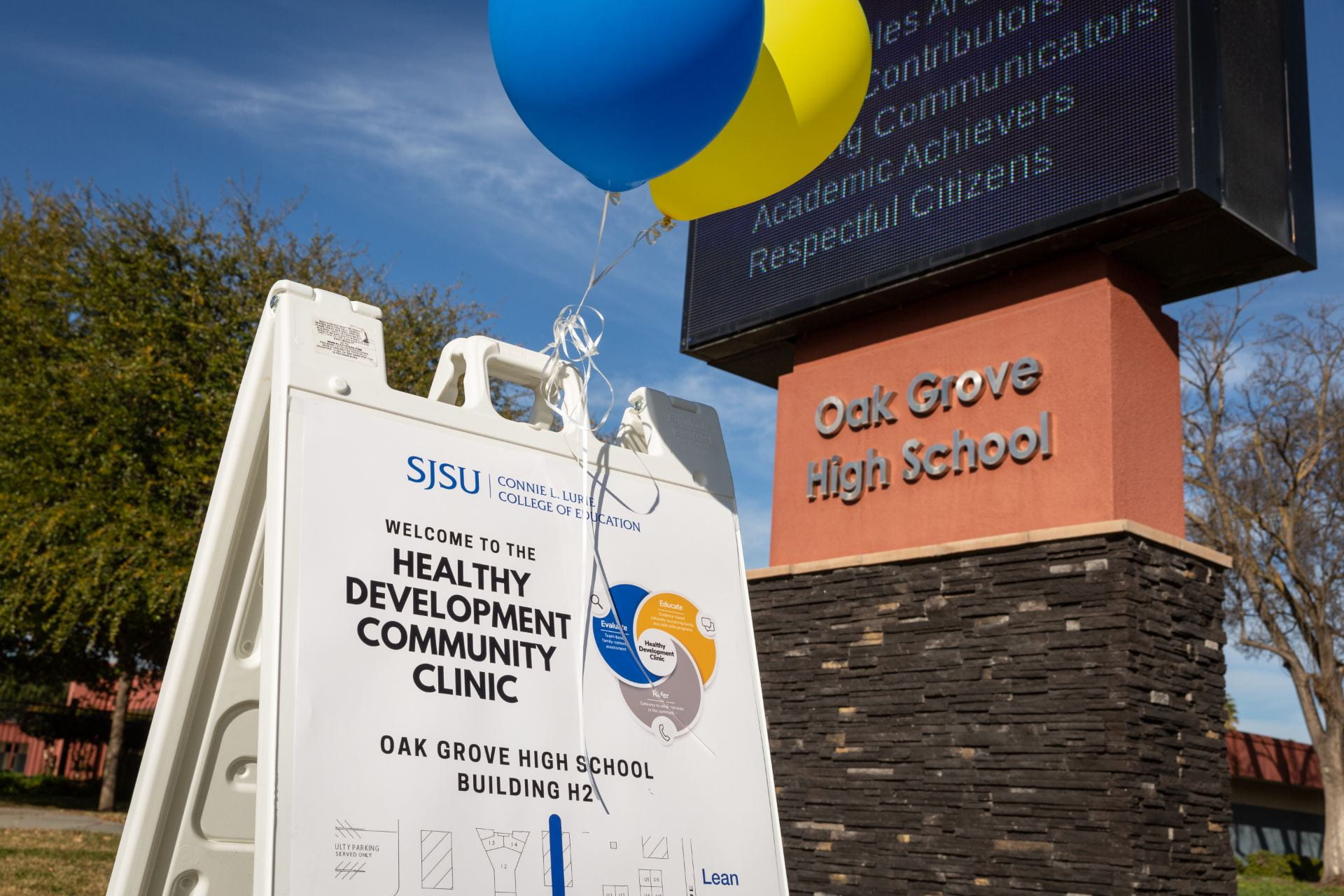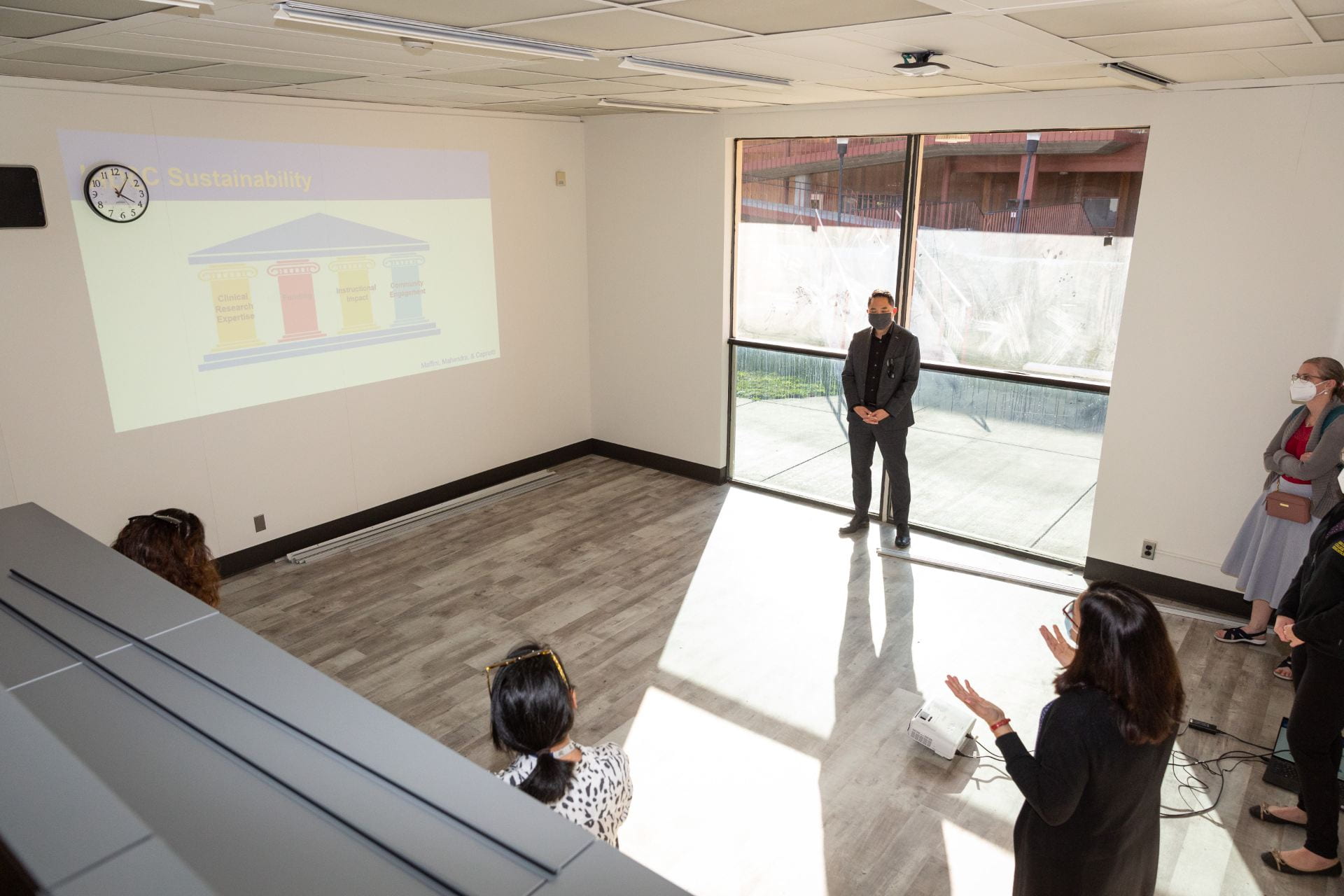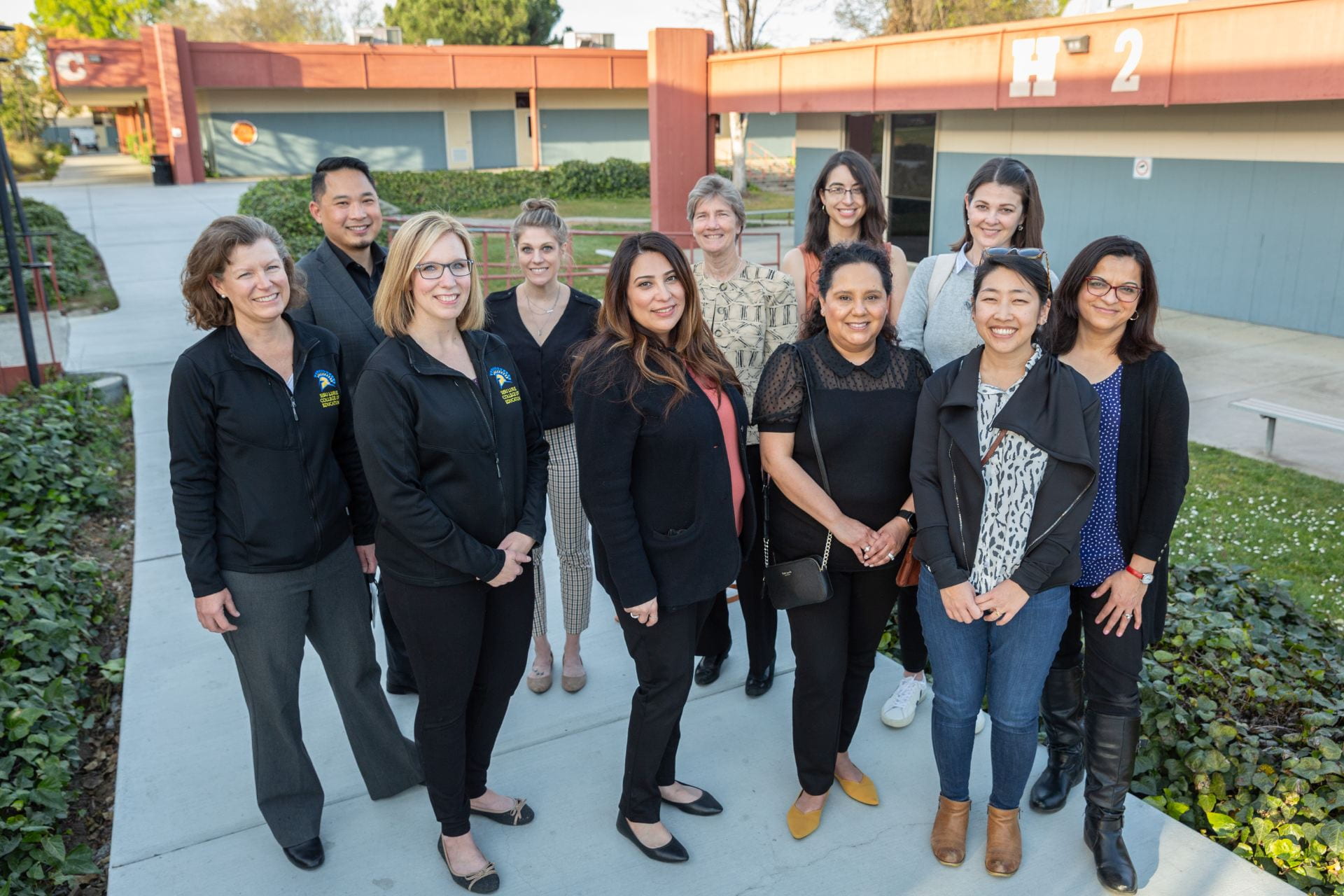SJSU Establishes Its First Healthy Development Community Clinic

Families of San José’s South and East Sides will soon have access to free screenings, evaluations, and mental health services for children up to age 18 at San José State University’s first-ever Healthy Development Community Clinic (HDCC).
The clinic is a partnership between SJSU’s Connie L. Lurie College of Education and the East Side Union High School District. The HDCC, which is scheduled to open in June, will be staffed by SJSU graduate students under the supervision of expert clinical researchers — and will be free and open to the public.

San José State faculty members and community partners gathered at Oak Grove High School in Feb. 2022 to preview the Healthy Development Community Clinic space. Photo by David Schmitz.
Nestled within Oak Grove High School’s campus, the clinic will have 12 individual and family therapy rooms, two large conference rooms and collaborative spaces for workshops and classes. Other services to be offered include individual, group and family counseling; parent and family education; support groups; skills workshops; literacy development; and more.
Heather Lattimer, dean of the Lurie College, said the idea is to “support children and families from birth through adolescence, to ensure access to early assessment and intervention services and to offer support therapy and counseling services to address specific concerns.”
In addition to supporting the college’s strategic plan, the HDCC also meets the East Side Union School District’s commitment to provide “wrap-around support services,” said Lattimer, which include access to social workers, food pantries and other resources beyond academics.
“The HDCC will allow [the district] to extend this support to younger children and families in the region, as well as expand the services that can be offered to their own high school students,” she added.
The HDCC is the brainchild of three SJSU professors and clinical researchers: Associate Professor of Child and Adolescent Development Cara Maffini, Professor of Communicative Disorders and Sciences and speech language pathologist Nidhi Mahendra, and Associate Professor of Clinical Psychology and clinical psychologist Matthew Capriotti.
Maffini explained that in communities like the East Side, many families can’t access the needed resources due to barriers such as money, transportation and time to visit providers who support healthy development, such as mental health professionals, physicians and dentists. SJSU and the East Side Union High School District can help solve that problem by bringing those services directly to the community.
“I have worked in different communities with significant childhood trauma and adversities steeped in systemic barriers to wellness. These communities also had tremendous strengths and cultural wealth,” said Maffini. “Our hope is to bring some of those services to them in ways that align with their cultural and language frameworks.”
“A lot of kids come to high school and have never accessed [wellness] services prior to entering here,” said Oak Grove High School social worker Valarie Ikemoto, ’02 Sociology, ’14 MSW. “Once they arrive, we need to do so much to get them services that they have always needed.”
Service-learning in the field

(back row, left to right): Edwin Tan, Elizabeth Matthews, Thalia Anagos, Ana Paz Rangel, Anna Dizack; (front row, left to right): Heather Lattimer, Cara Maffini, Maria Muñoz, Sarah Arreola, Janet Bang and Nidhi Mahendra. Photo by David Schmitz.
The clinic will also offer much-needed interprofessional training experience for SJSU students who are studying communicative disorders and sciences or speech-language pathology.
Lattimer said these programs need more clinical space for students to complete mandatory internships and accrue hours toward professional licensure. Additional off-site clinical space will help students stay on track to graduate on time.
Graduate students from SJSU’s speech pathology, communicative disorders and sciences, child and adolescent development and clinical psychology programs, including the master’s in family therapy licensure preparation program, will staff the clinic. SJSU plans to hire a clinic director to oversee operations.
Spartans will work interprofessionally — collaborating with professionals outside their fields — to develop holistic and culturally sustaining approaches to care, explained Mahendra. She said this approach will benefit both SJSU clinicians and clients seeking care.
“Interprofessional education for student clinicians expands their skillset as they work in interdisciplinary teams, and immerses them in community-engaged service delivery to diverse populations,” she said.
Destigmatizing mental health
HDCC research assistant Elizabeth Carrasco-Nieto, ’22 Psychology, said she finds the work meaningful because she believes “there is a lot of power in education.”
“We have yet to begin the therapy portion of the clinic, but I think this is an opportunity for the clinic to help bridge the gap of inaccessibility to mental health services, especially on the East Side, where students are largely from historically underserved communities,” she said.
Though the clinic is still being outfitted for in-person consultations, Carrasco-Nieto is creating short informational videos on the clinic website. The videos, produced in Spanish and English, offer insight on parenting and wellness topics. Maffini said that student assistants are helping prepare materials in Vietnamese as well.
For Carrasco-Nieto, this work hits close to home. As a graduate of Silver Creek High School, which is also in the East Side Union High School District, she noted that a wellness clinic would have done a lot to reduce stigma against mental health support services in her community.
“I think going to therapy and seeking help is a lot more normalized and talked about now, which is amazing,” she continued. “The HDCC is also open to families and not just students, so I think that is a plus. Doing this work that I’m so passionate about and at the same time in my community makes my heart warm.”
Learn how to support the Healthy Development Community Clinic.



